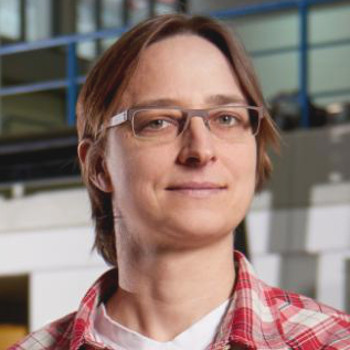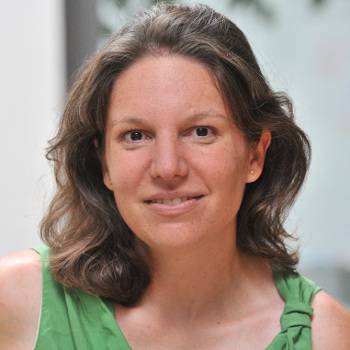01.03.2017 News
Automobile Microorganisms Biodiversity
Mapping ocean floors in 3D
The muli-million-dollar global XPRIZE competition to explore and map the ocean floors has reached its semi-finals. Still on board is the German team "Arggonauts".
01.03.2017 News
Automobile Microorganisms Biodiversity
The muli-million-dollar global XPRIZE competition to explore and map the ocean floors has reached its semi-finals. Still on board is the German team "Arggonauts".
03.03.2017 News
Chemistry Animals Biotechnology/Systems biology
Mussels could serve as a blueprint for the environmentally friendly production of complex polymers. Max-Planck researchers in Potsdam deciphered the intricate process.
06.03.2017 News
Food Plants Agriculture sciences
The German University of Hohenheim and the Ethiopian university Hawassa received 2 million euros in funding to start their SDG graduate school program investigating food security.
07.03.2017 Studies and statistics
Energy Plants Agriculture sciences
A survey carried out by the Federal Association of the German Bioethanol Industry (BDBe) highlights the positive attitude of consumers towards the use of biofuels from field crops.
08.03.2017 News
Construction Microorganisms Biotechnology/Systems biology
So far the processing of copper ores requires the application of toxic chemicals. A new Chilean-German research project aims at an eco-friendly product from marine bacteria.
10.03.2017 News
Agriculture and forestry Animals Agriculture sciences
Digital tools are gaining momentum among farmers. With its smart feeding software for dairy cows the start-up "fodjan" has attracted new investors.
14.03.2017 News
Chemistry unspecific Chemistry
Removing micro pollutants from sewage is commonly done via activated charcoal, which consists of fossil mineral coal. Fraunhofer researchers aim to replace coal with renewable resources.
14.03.2017 News
Food Animals Nutritional sciences
The companies DSM and Evonik founded new joint venture "Veramaris" to produce omega-3 fatty acids from marine algae. Salmon farms will benefit from the new source of essential fatty acids.

Researcher Profile
Food Plants Agriculture sciences
Putting technology in the service of nature has become a life’s mission for Cornelia Weltzien. As an agricultural engineer, she is working to utilise the full spectrum of technologies in new and complex systems that are aimed at conserving soil and facilitating the work of farmers.
15.03.2017 News
Chemistry Microorganisms Biotechnology/Systems biology
Pneumococci can cause severe pulmonary and inflammatory infections. Max Planck researchers identified a successful vaccine consisting of only three adjoined sugars.
20.03.2017 News
Agriculture and forestry Animals Agriculture sciences
The start-up InnoCow is presenting a new diagnostic tool for dairy cows at the CeBIT. It provides farmers with information about the health and impending heat of their cows.
22.03.2017 Success story
Consumables unspecific ICT
The BioFabNet focussed on developing communication strategies for 3D printing in order to generate public awareness for biobased materials and the possibilities of bioeconomy.
22.03.2017 News
Consumables Plants Materials sciences
Venture capital firm Sofinnova has raised €106 million for its Industrial Biotech I fund, which aims to invest in bio-based industry start-ups.
24.03.2017 News
Agriculture and forestry Plants Agriculture sciences
New addition: A branch of the European Forest Institute has just opened in Bonn. The institute conducts research on forests at a pan-European level and advises policy makers.

27.03.2017 Interview
Agriculture and forestry Plants Agriculture sciences
With their project “HypoWave” scientists in Frankfurt, headed by the agricultural expert Martina Winker, aim to re-purpose municipal sewage waste water for hydroponic plant breeding programmes by filtering out the nutrients while simultaneously minimising water usage in agriculture.
28.03.2017 News
Food Plants Agriculture sciences
International experts from politics and industry gathered in Berlin to discuss the implementation of the 2030 Agenda for Sustainable Development.
30.03.2017 News
Chemistry unspecific Biotechnology/Systems biology
The DNA molecule offers countless structural possibilities. Dresden-based scientists developed a synthetic envelope to protect the sensitive building blocks.
31.03.2017 News
Food Animals Biodiversity
Aquacultures are polluting Chile's rivers with a cocktail of dissolved organic substances. An international team of researchers establishes new safety limits.
04.10.2017 Country
Chemistry unspecific Forestry
Sustainable biomass production is being promoted in the wooded kingdom.
04.04.2017 Country
Chemistry unspecific unspecific
Finland’s dense pine forests are the central resource of its bioeconomy.